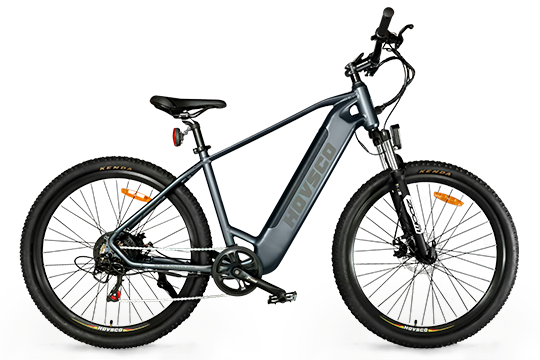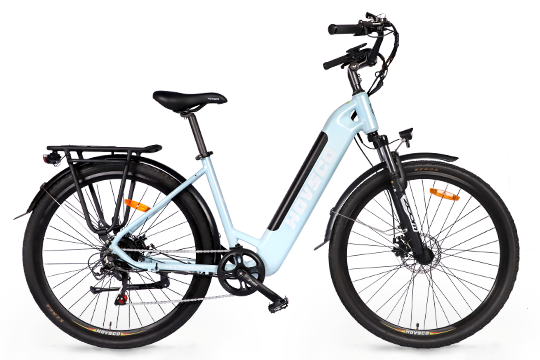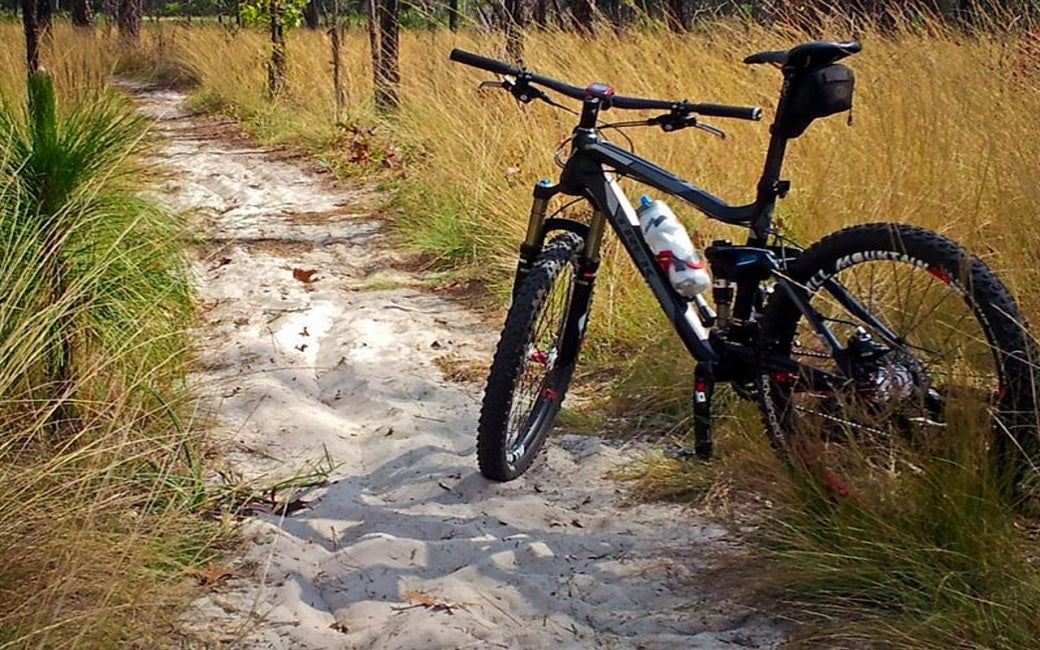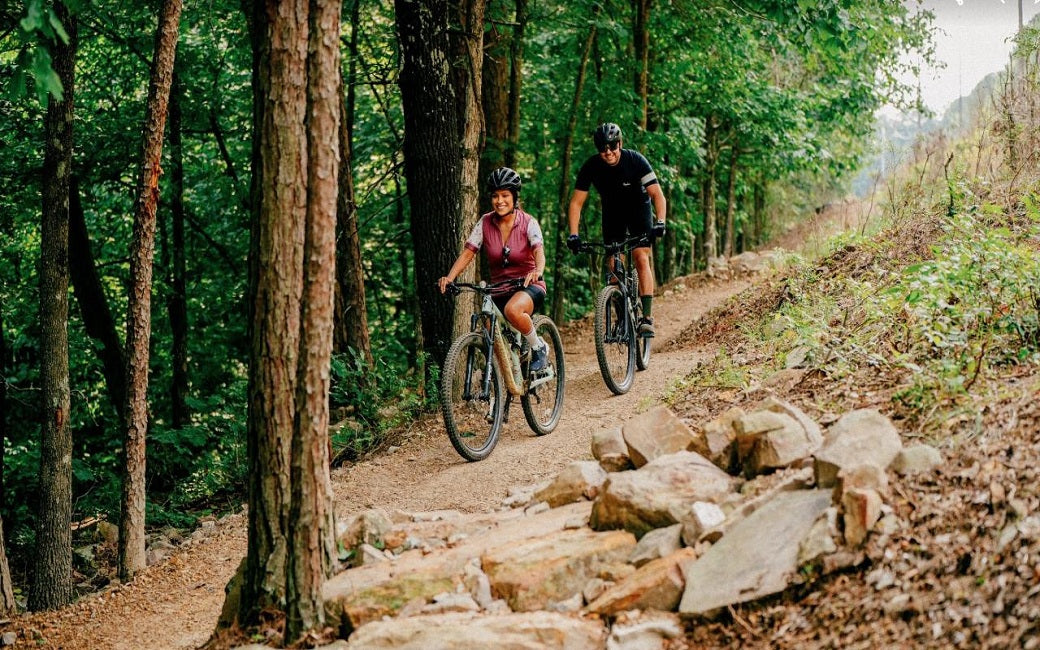How to Choose an Ebike Saddle

Your saddle is one of the most important parts of your bike when it comes to comfort. Having tacky grips and the right pedals are nice, but choosing the best bike seat has a lasting impact on your comfort and enjoyment of the ride. The best bike saddle is one you don't notice. A bad one, well, it’s a literal pain in the butt.
There are a variety of factors that can influence a saddle's fit and comfort. We will now explore the other variables of ebike saddles and you will be able to refine and define the perfect ebike saddle for your riding style and your needs. Now that we know what type of rider you are and what width of saddle you need, we can dig into the other variables of ebike saddles.
1. Saddle Curve
The saddle of an e-bike curves in two directions. A variety of curve combinations are available, both from the front and from the back. The saddles wave is a front-to-back curvature. For riders who prefer riding upright while being able to move freely in the saddle and achieve several comfortable positions, saddles with a low wave and flat front to back are ideal. A less waved saddle is a better choice for people who climb most of the time sitting up or ride drop-bar bikes and like to slide forward onto the drops and back into the hoods.
The second direction of curvature is side to side. Generally, flatter saddles are more comfortable, if the saddle isn’t exactly the same width as your sit bones, a flatter saddle will give you more wiggle room to be comfortable on. But a more curved saddle, that fits you well, will keep you centered on the bike and give you a little extra control.
2. Shape
When considering an e-bike saddle, it is always the shape that comes first in the line of thought. Body types and requirements can be accommodated by a variety of shapes. When viewed from the top, most saddles are either T-shaped or Pear-shaped. T saddles have a small nose, but their rears flare out greatly. The Pear saddles provide a seamless transition from narrow to wide.
A pear-shaped saddle gives you more room to change riding positions comfortably, but if you sometimes have trouble with thigh rub on your saddle, a T saddle will stay out of the way and help you avoid that.
3. Cut-outs
A bike seat with a cut-out is deemed more comfortable by some riders and this style has gained in popularity. The idea behind the cut-out is that it reduces pressure and improves blood flow. If you have a problem with numbness when riding you may find that a seat with a pressure relieving channel can help.
4. Cover
The saddle cover is the outer cladding of the saddle, and it's where you sit. A saddle cover can be made from a variety of materials, including leather, although synthetic coverings are far more common. Be aware of visible seams and rough patches when choosing a saddle, as these can cause pain or wear holes in your shorts depending on the position. If you commute to work regardless of the weather, a waterproof saddle with an anti-slip surface will be your ideal saddle.
5. Rails
The saddle rails link the shell to the seat post clamp. Steel, aluminum, titanium, or carbon are the most common materials used for saddle rails. The more you pay for rail material, the lighter your saddle will be. There's nothing wrong with aluminum rails on your saddle, but if you want the lightest bike possible, you should also consider titanium or carbon.
6. Padding
It is possible to have too much padding, which can cause chafing and discomfort on long rides. Saddle padding can be either foam or gel. Marketing materials tout gel as the most comfortable, but in the end, it comes down to personal preference. When riding an ebike without rear suspension on rough terrain, you may need extra saddle padding to cushion your rear end.
Consider the Type of Riding You Do
Since saddles aren't made to suit all types of riding, it is imperative to use a saddle that suits your riding style. Saddles designed for short-distance racing are miserable for long-distance competitions. Wider seats, on the other hand, cause too much obstruction as you accelerate. Before purchasing a saddle, consider the sort of riding you will be performing.
Bike seats are frequently placed into one of these five categories:
Recreational cycling: If you prefer shorter rides while riding a cruiser, urban or commuter bike, try a saddle designed for recreational cycling. Sometimes, the saddles sport a short nose and have plush padding and springs.
Road cycling: Are you racing or logging a lot of road miles? For the best power transfer while pedaling, road cycling saddles tend to be long and narrow with minimal padding.
Mountain biking: On mountain trails, you alternately stand up on the pedals, perch way back (sometimes just hovering over or even off your saddle) or crouch down in a tucked position. Because of these varied positions, you’ll want a mountain-specific saddle with padding for your sit bones, a durable cover and a streamlined shape that will aid your movement.
Bike touring: For long-distance riding, you’ll want a saddle that falls between a road and mountain saddle. Saddles for bike touring typically provide cushioning for your sit bones and a fairly long, narrow nose.
Bike commuting: Similar to saddles for road cycling and bike touring, saddles for commuting have some padding, but generally not too much. If you commute by bike in rain or shine, you may want to consider the weather resistance of the cover material.
How to Choose a Comfortable Saddle?
Below are some tips that will make your selection process easier.
Take into account your riding style. The type of cycling you do determines the shape and type of saddle you need. For example, comfort requirements for off-road riding are different from those for city commuting. At an e-bike shop, ask about saddles that are designed specifically for your riding style. You should adjust the saddle height to the optimal value once you have selected a comfortable saddle for your discipline.
Flexibility matters. If you are flexible, you are likely to ride in a stable position. A flat saddle will be more comfortable in such a case. If you are not that flexible, a more rounded saddle would be a better choice.
Position matters. The position you adopt while riding influences the selection of the saddle. If you tend to bend forward to adopt a more aerodynamic position, be sure to choose a saddle with a narrow nose. When you bend forward, you put more pressure on the front of your pelvis. Too wide in that area is a discomfort for your trip.
Choosing the right ebike saddle is not an easy task, and it may take you some time. It may take several trips to ebike shops and possibly even trying over two dozen saddles before you find the right one, but once you do, you will never want to leave your ebike again. Once you understand the different elements of an ebike saddle and know how to narrow down the infinite array of ebike saddles, you can head out with confidence to find the best ebike saddle for your needs.






Leave a comment